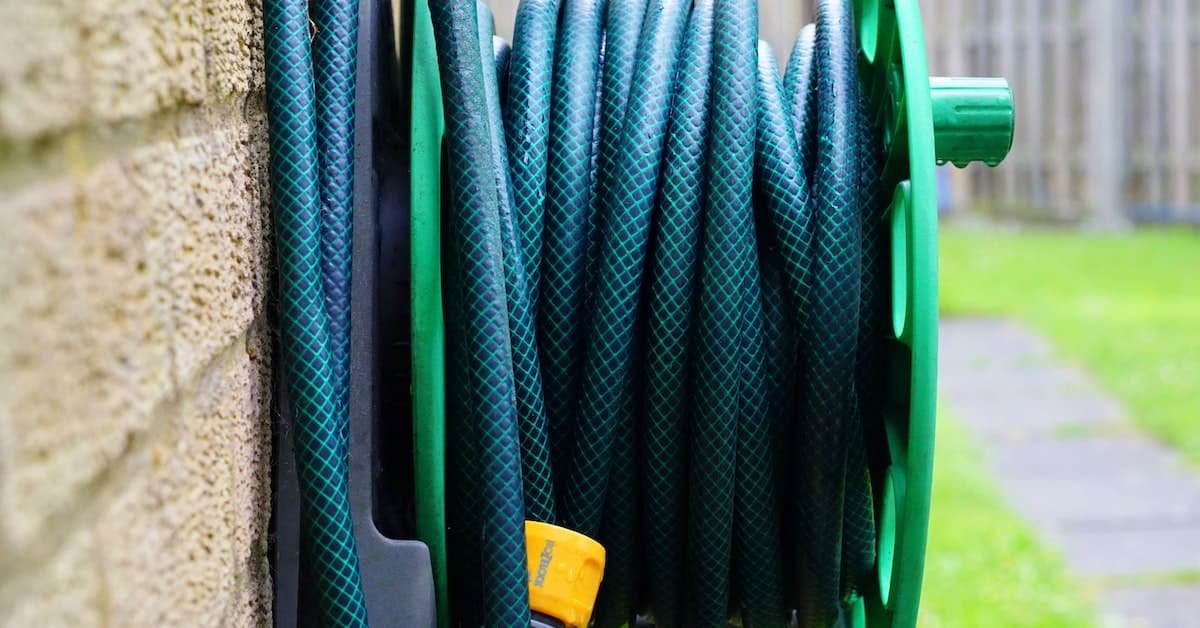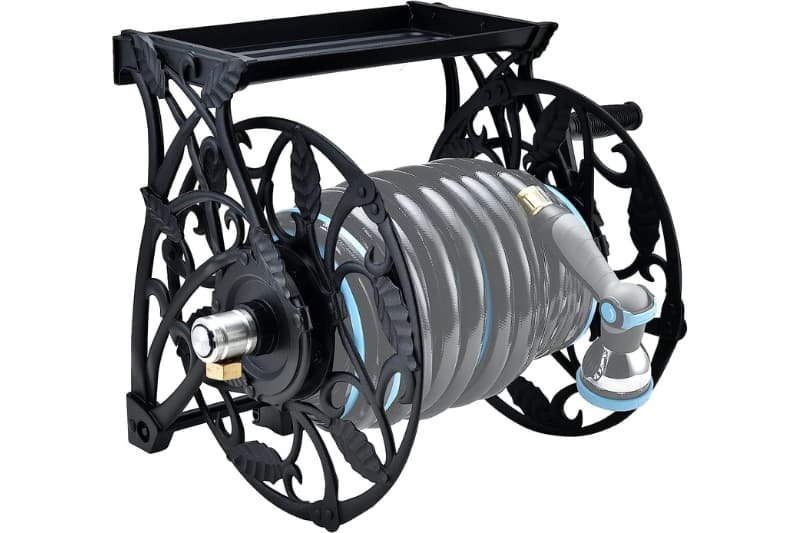
Proper storage of your garden hose is crucial to maximize its lifespan and ensure it is always ready to use. Did you know that a kinked hose can reduce water flow by up to 50%? This can lead to inefficient watering, and in turn, a less healthy garden.
In this article, we will explore ten clever ways to store your garden hose, ranging from simple hose hangers to decorative hose holders and even hiding your hose in a pot. Choosing the right storage method for your garden hose can help prevent kinks, damage, and deterioration.
It is also essential to choose a high-quality garden hose that can withstand the elements and regular use. In this article, we will discuss the benefits of investing in a high-quality garden hose, different storage methods, and tips for proper hose maintenance.
Whether you have a small balcony garden or a large landscape to maintain, there is a hose storage solution that will work for you.
Short Summary
- Properly storing your garden hose is important for preventing issues such as kinks and deterioration from the sun.
- Using a high-quality garden hose and storing it properly will help it last longer.
- There are many different options for storing your garden hose, including simple hangers, decorative holders, and even hiding it in a pot or basket.
- It’s important to choose a safe storage option that works for you, whether it be a standing holder or a trolley that can be moved around.
Importance of Proper Storage
Proper storage is essential for garden hoses as it reduces the risk of damage, such as kinks, and protects them from deterioration caused by exposure to sunlight. Improper storage can lead to kinks in the hose, which can cause water flow to be restricted or completely blocked.
Additionally, leaving a hose out in the sun can cause the material to become brittle and crack, shortening the lifespan of the hose. There are many benefits to proper hose storage, including reduced maintenance costs and longer hose life.
By investing in a high-quality garden hose hanger or holder and storing the hose properly, homeowners can avoid having to replace hoses frequently. Creative hose storage solutions can be found in stores or made at home, such as using a decorative hose holder or putting the hose in a pot.
Ultimately, taking the time to properly store garden hoses can save time, money, and frustration in the long run.
Benefits of High-Quality Hoses
Investing in a high-quality garden hose is like buying a reliable tool that will serve its purpose for years to come, much like a carpenter investing in a durable hammer that can withstand heavy use.
A high-quality garden hose has durability advantages over cheaper options, including resistance to kinking, puncturing, and tangling.
Additionally, high-quality hoses are typically made from materials that are resistant to UV rays and temperature fluctuations, which can lead to premature deterioration.
While a high-quality garden hose may have a higher upfront cost compared to cheaper options, it is a cost-effective investment in the long run.
Cheaper hoses may need to be replaced frequently due to wear and tear, which can result in higher long-term costs.
On the other hand, a high-quality hose hanger and proper storage can help extend the lifespan of a high-quality garden hose, making it a more cost-effective option in the long run.
Ultimately, investing in a high-quality garden hose is a smart decision for any gardener or homeowner looking for a reliable and long-lasting option.
Different Storage Methods

Various methods exist for storing garden hoses, depending on personal preferences and the available space. Simple options include hanging the hose on a nail or using a basic hose hanger, which can be mounted on a wall or fence. Decorative hose holders, such as those made of wrought iron or other materials, can add a stylish touch to the outdoor area while also providing a practical function.
Hose hangers with cranks allow for easy winding of longer hoses while putting the hose in a pot or wicker basket can create a natural or rustic look that blends in with the surroundings. For those with limited outdoor space, keeping the hose in a garage or shed can be a viable option, although it may require extra effort to take the hose out and put it back.
Hideaway hose end tables are a clever way to store the hose while also serving as a functional piece of furniture, although they may not be suitable for larger hoses. Standing hose holders are practical and affordable, but they may not be aesthetically pleasing and may take up more space than other options. Hose trolleys are convenient for rolling hoses to different spots and can be moved around, making them a versatile choice for small gardens or multiple outdoor areas.
Ultimately, the best hose storage method will depend on individual preferences, the size of the garden, and the available resources.
Tips for Hose Maintenance
Maintaining your garden hose in top condition is essential to ensure that it lasts for years to come, just as a well-oiled machine needs regular maintenance.
One of the primary ways to prevent hose damage is by storing it properly. Storing your garden hose in a shaded area, such as a garage or shed, protects it from the harmful effects of the sun. This is because the sun’s UV rays can cause the hose material to deteriorate, leading to cracks and leaks over time.
Another way to maintain your garden hose is by cleaning it regularly. Hose cleaning techniques include using a mild detergent and warm water to remove dirt and debris from the hose’s surface. It is essential to rinse the hose thoroughly after washing to prevent any detergent residue from damaging the hose material. Additionally, avoiding harsh chemicals, such as bleach or solvents, is crucial as they can damage the hose material and cause it to break down faster.
Proper maintenance and care of your garden hose will ensure that it remains in good condition and lasts for years, saving you money in the long run.
FAQs
What are some common mistakes people make when storing their garden hoses?
As the saying goes, “Prevention is better than cure”. Common mistakes when storing garden hoses include leaving them exposed to the sun, kinking or twisting them, and not draining them properly. Efficient solutions involve using proper storage techniques, such as hanging them on hose hangers or storing them in covered areas. Best practices include regularly checking and maintaining the hoses to prevent damage.
Can using a low-quality hose hanger cause damage to the hose?
Using a low-quality hose hanger could cause damage to the hose, leading to leaks, kinks, and other issues. A hose reel can provide a more secure and stable storage option, while tips for preventing hose kinks include avoiding sharp bends and ensuring proper drainage after use.
Are there any creative or unusual ways to store a garden hose?
Unconventional methods and DIY solutions for storing garden hoses can include repurposing old mailboxes, using PVC pipes to create a hose rack or hanging hoses from tree branches. However, it’s important to ensure that these methods are safe and won’t damage the hose.
How often should a garden hose be inspected for damage?
To ensure optimal performance and safety, it is important to inspect garden hoses regularly for signs of damage, such as cracks, leaks, or bulges. This can be done by visually examining the hose and feeling for any abnormalities. Regular inspection can prevent potential hazards and prolong the life of the hose.
Does the author have any recommendations for specific brands or models of hose hangers?
The author does not provide specific brand or model recommendations for hose hangers. However, readers can search for top-rated hose hangers online to find cost-effective options that suit their needs for proper garden hose storage.



